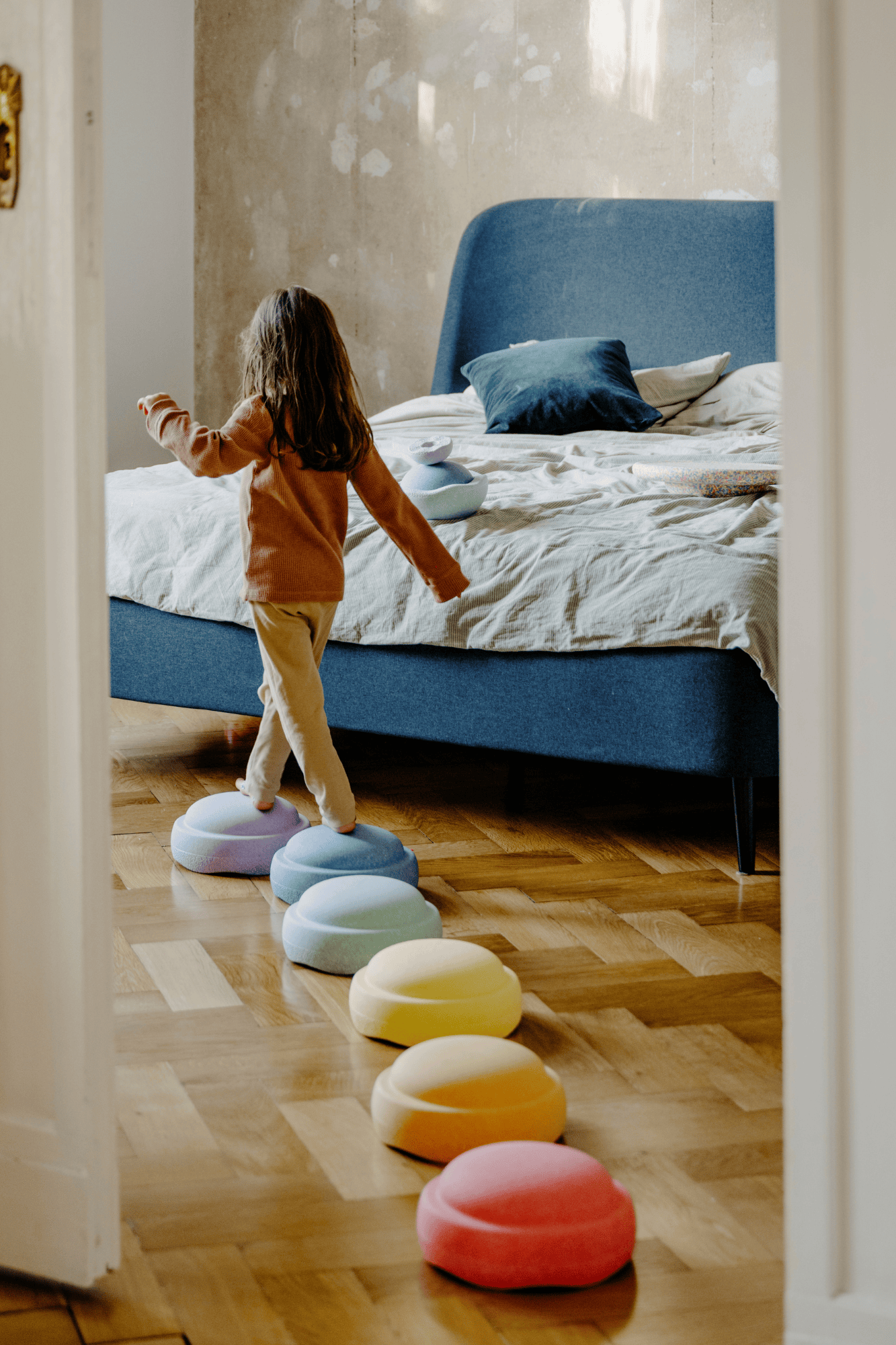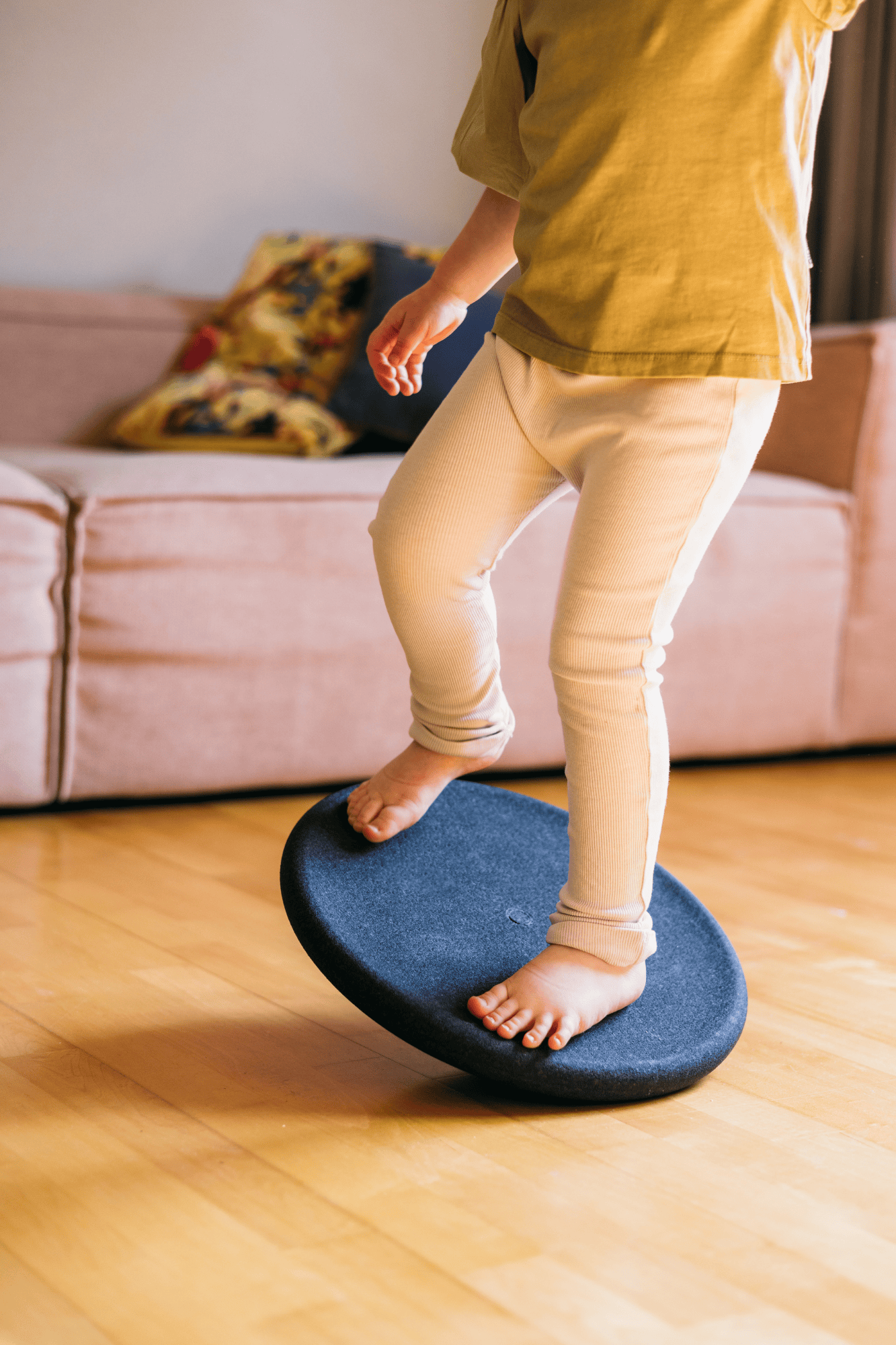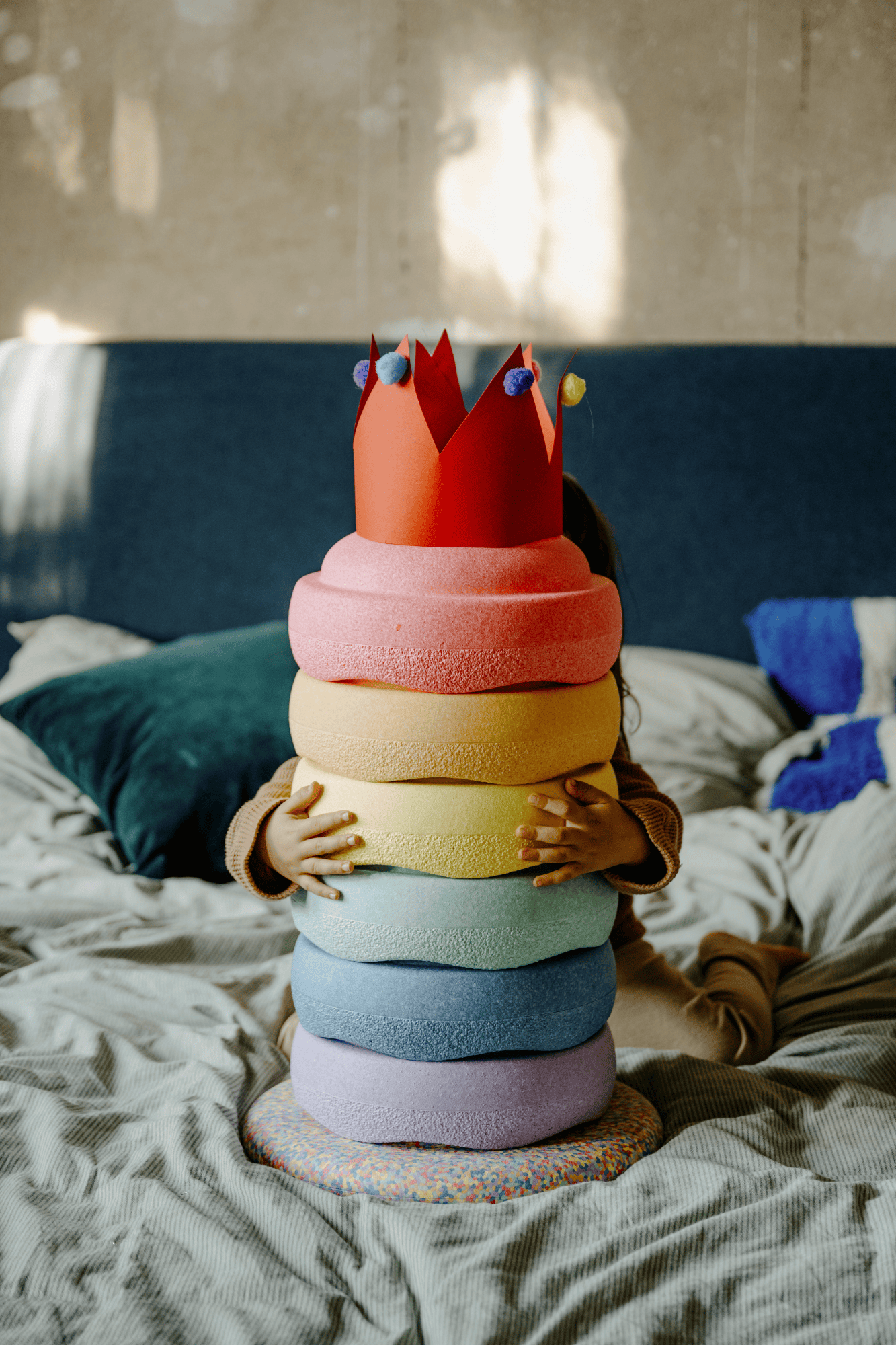Hannah König & Stephan Schenk
by Enrico Fragale Esposito
Just over a month ago, Hannah König and Stephan Schenk earned a coveted spot in the Forbes 30 Under 30 class of 2024. This remarkable achievement highlights the innovative spirit behind the brand Stapelstein.
In a short time, what initially appeared to be a stylish hat to us (yes, it really happened during the fair in Paris!) has proven to be so much more. These vibrant, stackable play elements have quickly become a staple in children’s playrooms, transforming them into dynamic, imaginative spaces. Resembling large, colorful stones (Stapelstein means ‘pile of stones’ in German), these versatile pieces are lightweight, space-efficient, and perfect for encouraging essential physical activity in kids.
Stapelstein’s design is both simple and timeless, inviting endless creative uses. Made from EPP, a highly durable and eco-friendly material produced in Germany, these elements are not only strong but also sustainable. They contain no plasticizers or propellants, are 100% recyclable, and can even be used outdoors or in water.
Adults can also enjoy the benefits of Stapelstein, using them as yoga supports, height-adjustable stools, or even as stylish storage containers.
Let’s meet the visionaries behind this innovative brand, who also run a small goat farm in the Swabian Alb, where they live out their commitment to sustainability and creativity every day.
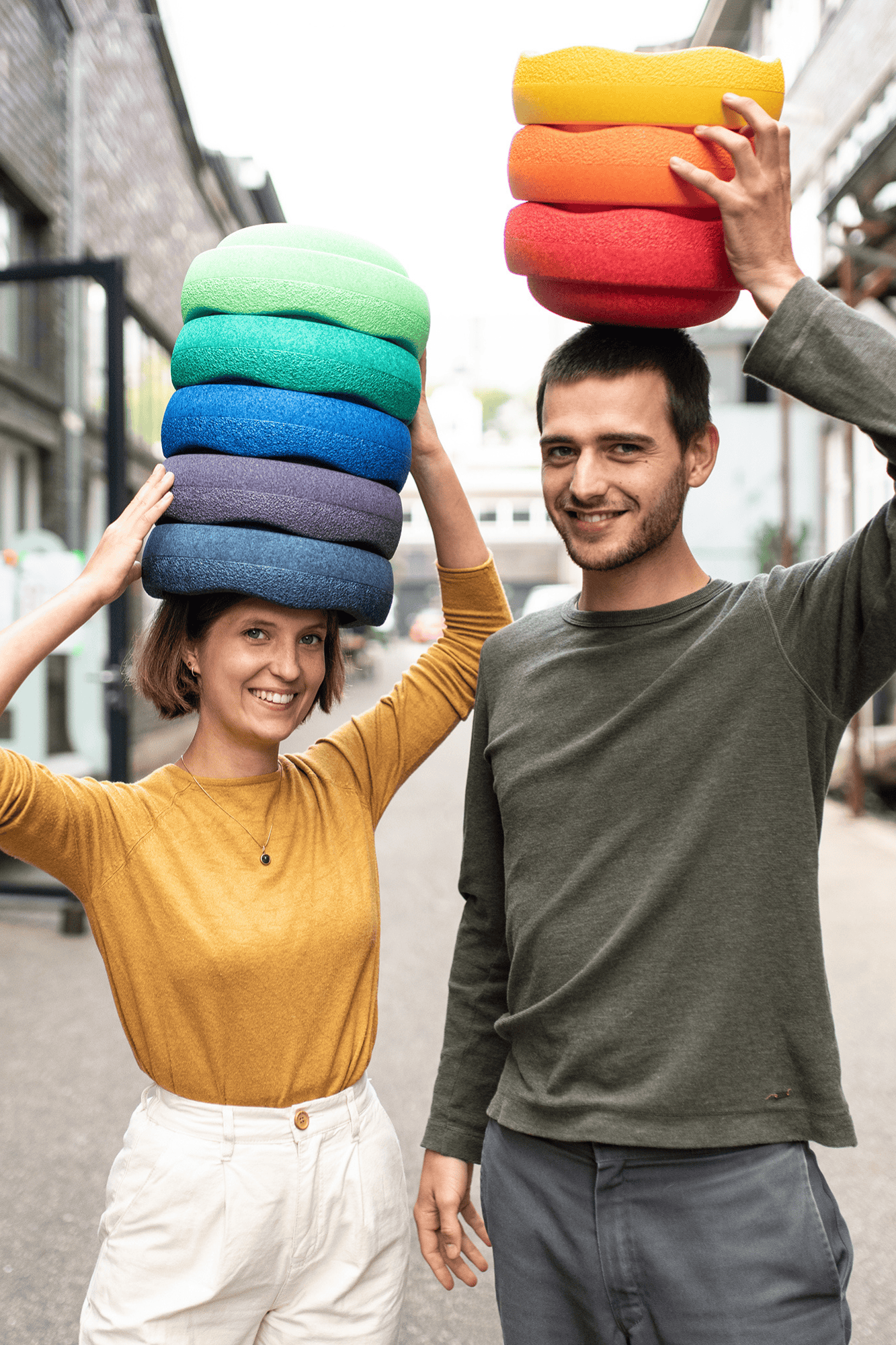
When and how did you meet?
Hanna and I come from the same region, an area of Germany near Schwarzwald. We had mutual friends and we slowly became a couple in life and work.
How did the idea of producing Stapelstein modules come about?
I come from a family of educators and teachers – in fact my dad taught physical education. Health, exercise and the fact that kids weren’t getting enough physical activity were a constant topic of discussion at home. The lack of movement and play has been a longstanding concern in our society. There are studies on how that leads to deficits in a child’s health and development. So, to help change this, my goal was to create a something for children that encourages movement through playful activity. It all started with the challenge of how to integrate playful movement into children’s daily lives. I used simple prototypes and went through many test phases with children, parents, and educational professionals to finally find the simplest form that would enable as many functions as possible and still leave room for imagination. During the design process, I collaborated closely with educators, child development specialists and movement experts. It helped me to create the best possible product where form, function and beauty are crafted together in harmony.
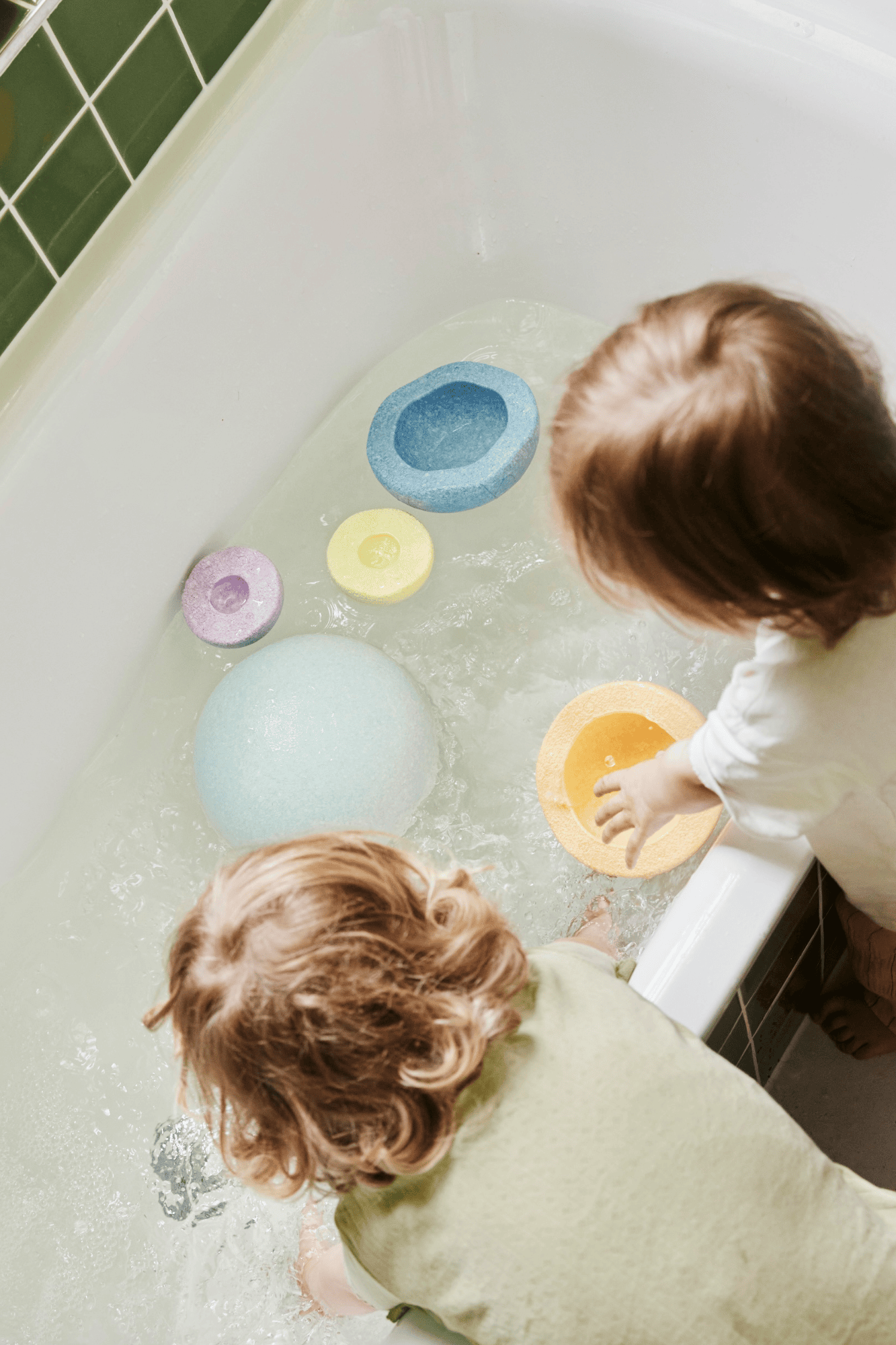
When we first saw your brand, we immediately thought of using the colorful modules as hats! Tell us the most unexpected ways in which your elements are used?
We continue to discover new ideas on how to use Stapelstein! On a recent occasion, it was surprising to observe a child in a playgroup greeting each element of Stapelstein before going home. Particularly interesting are the moments when children themselves start to expand their boundaries and develop new ideas and rules for the game. This always fascinates us!
What were your favorite games as a child?
Everything with movement, things that you can rediscover again and again
Where do you live and what tips would you suggest to a family traveling in your area?
We live in a small village on the edge of the Swabian Jura near Hohenzollern Castle. A place full of incredibly beautiful nature with its wildlife trails, stalactite caves and amazing outdoor play areas. We recommend a visit to the Liechtenstein Castle. There’s also an adventure trail through the trees with a giant playground nearby. If you want to eat something, well… the suggestion is to make something yourself and have a picnic. 🙂
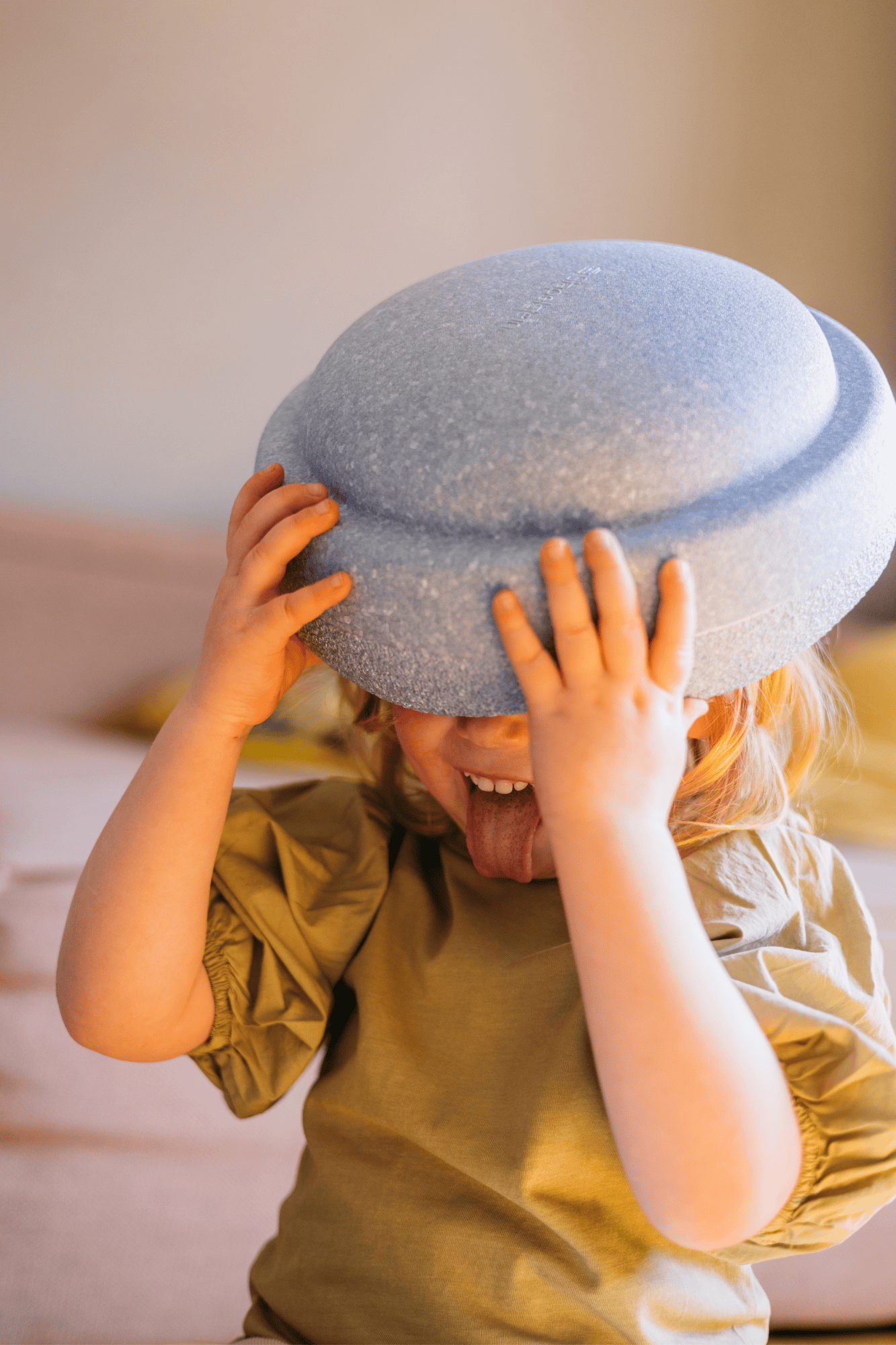
One of your goals is to maintain a lifestyle with the least possible climate impact. With what daily actions do you achieve this?
We approach sustainability holistically: by trying to think, live and work responsibly. From the way we develop our products, to the choice of material and production methods, shipping and packaging through to long-term and fair partnerships with suppliers and distribution channels. Our goal is a child-friendly world and to achieve this we must always be mindful of the new generations and the state of the world we will leave to them. For example grass cardboard, no further packaging or print products; climate-neutralised production; travelling by train.
Can you tell us what will be new in the Stapelstein range?
We want to build even more bridges between people of all ages, genders, cultural backgrounds and abilities. Stapelstein is for all people. As a result, we want to continue to expand internationally, establish ourselves in new sectors and get people to move together at play.
Product innovations are planned for this year that will expand the existing portfolio on a modular basis and a dedicated physical space (such as a store) that will make the elements tangible and accessible.
